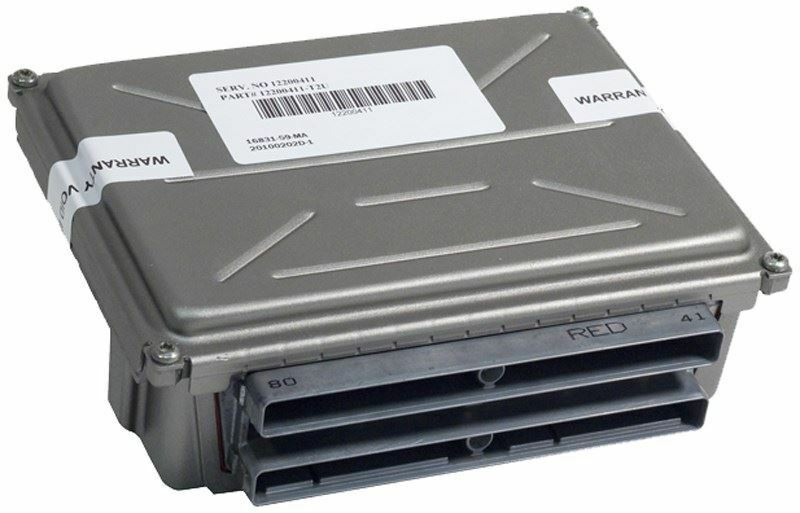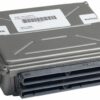Restore Your Minivan’s Performance and Reliability
Is your 2001-2002 Pontiac Montana suffering from frustrating issues like stalling, erratic shifting, a persistent Check Engine Light, or a complete no-start condition? Before you spend a fortune on diagnostics or replace perfectly good sensors, the problem might be the very brain of your engine: the Powertrain Control Module (PCM). Over my 20 years in the garage, I’ve seen countless GM vehicles from this era sidelined by a failing PCM. It’s a common issue, but luckily, it’s a straightforward fix with the right part.
This isn’t just a replacement part; it’s a complete solution. We take a genuine OEM Powertrain Control Module (compatible with part numbers 12209614, 12202600, and 09360210) and flash it with the latest, most stable software from General Motors. We program it specifically to your vehicle’s VIN, ensuring it communicates perfectly with your engine, transmission, and security system right out of the box. This crucial step eliminates the need for an expensive trip to the dealership for programming, saving you time, money, and hassle.
A Technician’s Notebook: The Intermittent No-Start Puzzle
A customer brought in their 2002 Montana that would randomly refuse to start. It had been to two other shops that replaced the fuel pump and the crank sensor, but the problem persisted. When it arrived at my bay, it started fine. I knew this would be a tricky one. I let the engine run for about 45 minutes to get everything nice and hot. Sure enough, after shutting it down and trying to restart, it was dead—no spark, no fuel injector pulse. A quick check with a scan tool showed a loss of communication with the PCM. After letting it cool down for an hour, it fired right back up. This heat-soak failure is a classic symptom of internal circuit board breakdown in these specific PCMs. We installed a pre-programmed module, and the van has been running reliably for the owner ever since. It’s a reminder that sometimes the ‘brain’ is the simplest, most overlooked cause of complex problems.
Is Your Montana Showing These Signs of a Bad PCM?
A failing PCM can cause a wide range of symptoms that often mimic other component failures. If you’re experiencing any of the following, your 2001-2002 Montana PCM is a likely culprit:
- ✔ Unexplained Check Engine Light (CEL)
- ✔ Stalling or cutting out while driving
- ✔ Harsh or erratic automatic transmission shifting
- ✔ Drastic decrease in fuel economy
- ✔ Engine cranks but will not start
- ✔ Communication error codes, such as P0601 (Internal Control Module Memory Check Sum Error) or P0606 (PCM Processor Fault)
- ✔ Failure to pass an emissions test
A Straightforward Guide to Installation
Installing your newly programmed module is a job most DIYers can handle in under an hour. For the 2001-2002 Montana, the PCM is located in the left-hand (driver’s side) of the engine compartment, typically housed within the air filter box assembly for protection.
- Safety First: Disconnect the negative terminal from your vehicle’s battery and secure it away from the post.
- Locate the PCM: Open the hood and find the air filter housing on the driver’s side. The PCM is usually mounted inside or attached to this assembly.
- Access the Module: You may need to remove the top of the air filter box to get clear access to the PCM and its electrical connectors.
- Disconnect the Connectors: Carefully unclip and remove the wiring harness connectors from the old PCM. These connectors have locking tabs that need to be released before they can be pulled off.
- Swap the Modules: Unbolt the old PCM from its mounting bracket and set it aside. Secure the new, pre-programmed module in its place.
- Reconnect Everything: Firmly plug the wiring harness connectors into the new PCM until they click into place. Reassemble the air filter housing.
- Final Step: Reconnect the negative battery terminal. Your vehicle may require a simple security relearn procedure, which typically involves turning the key to the ‘ON’ position for 10-15 minutes. Consult your owner’s manual for specific instructions.
Verified Vehicle Compatibility
This module is a direct-fit replacement for a wide range of GM vehicles. While this listing is focused on the 2001-2002 Montana PCM, it is also guaranteed to fit the following models when the part number 12209614 is specified. Always verify your original part number for a perfect match.
- Alero: 2001-2003 (3.4L)
- Aurora: 2001-2002 (3.5L)
- Aztek: 2001-2003
- Century: 2001-2002
- Grand Am: 2001-2003 (3.4L)
- Grand Prix: 2001-2003 (3.1L)
- Impala: 2001-2003 (3.4L)
- Intrigue: 2001-2002
- Lumina Car: 2001
- Malibu: 2001-2003
- Monte Carlo: 2001-2003 (3.4L)
- Montana: 2001-2002
- Regal: 2000-2002
- Rendezvous: 2002-2003
- Silhouette: 2001-2002
- Venture: 2001-2003
Frequently Asked Questions
Why do you need my VIN number?
Your Vehicle Identification Number (VIN) is essential. It allows us to load the exact, correct GM-certified software for your Montana’s specific engine, transmission, and options. This VIN-matching service is what makes the module a true plug-and-play solution, saving you a trip to the dealer.
Is any additional programming needed after installation?
No dealership programming is required. However, like with any PCM replacement on these GM vehicles, you will need to perform a security relearn procedure (often called a Passlock or Passkey relearn). This is a simple process you can do yourself with just the ignition key and about 30 minutes of time. Instructions are widely available online or in service manuals.
Will this fix my car’s specific problem?
This PCM will resolve issues directly caused by a faulty module, such as internal processor faults (P0601), communication errors, or failed injector drivers. While it solves many common problems, it’s important to ensure your vehicle’s issues are not caused by other components like bad wiring or failed sensors. When in doubt, a professional diagnosis is recommended.
Is this part difficult to install for a DIYer?
Not at all. For most of the vehicles listed, including the Pontiac Montana, the PCM is easily accessible in the engine bay. With basic hand tools and our step-by-step guide, most home mechanics can complete the replacement in under an hour. The most important part is ensuring the battery is disconnected before you begin.


